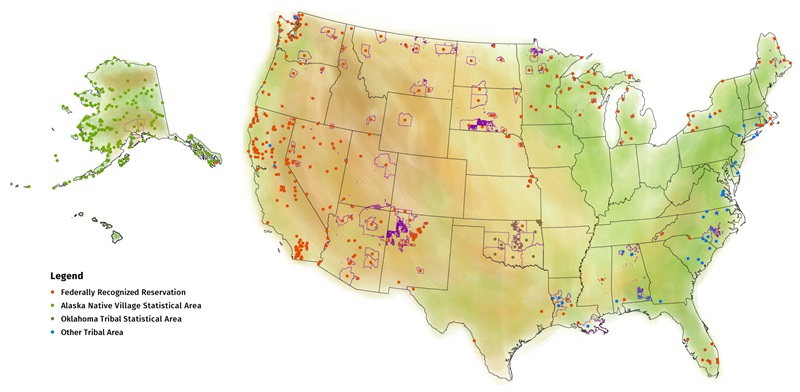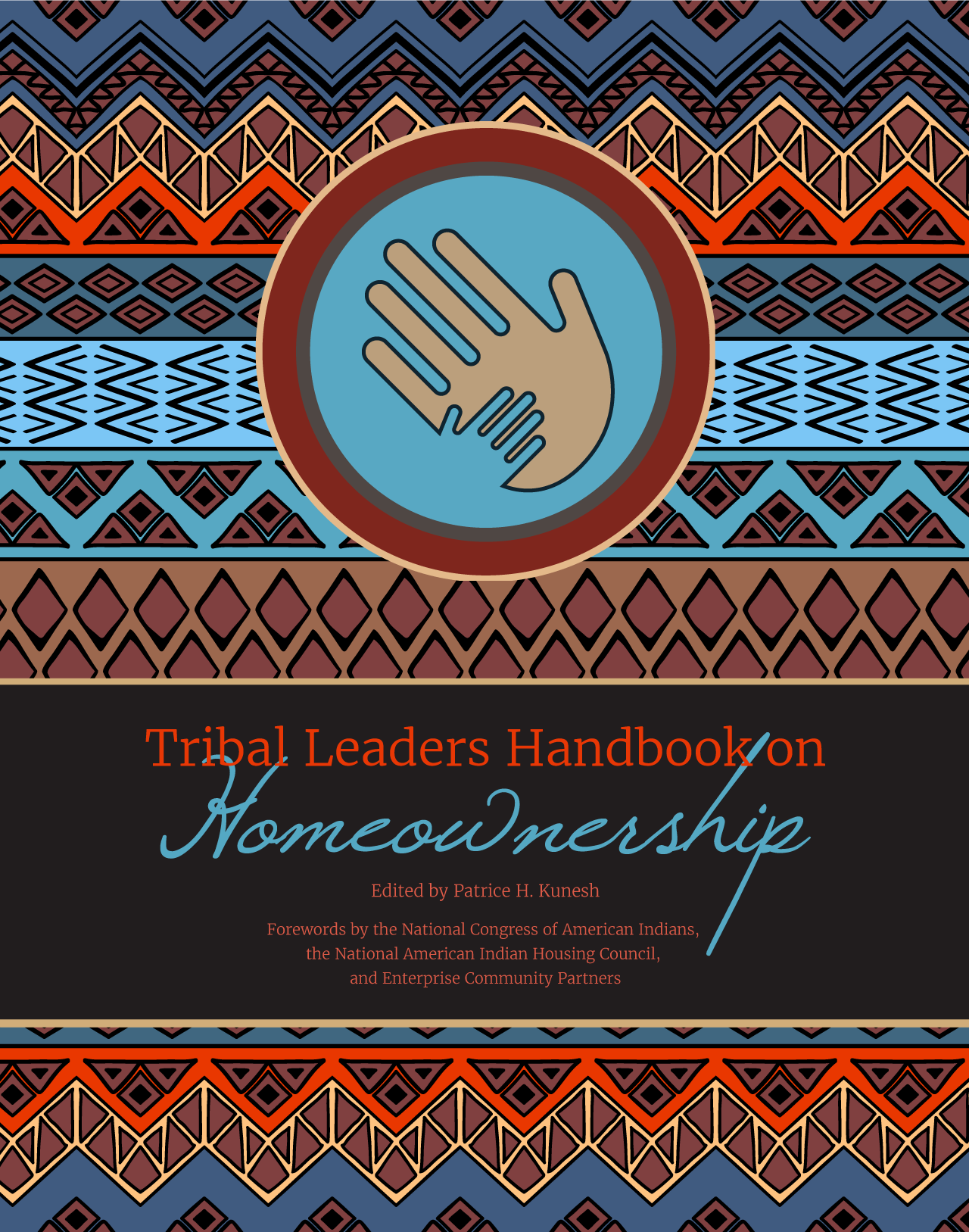Indian Country connotes an enduring interconnection between land and people. It also is a complex web of historical, legal, and social forces that make it unnecessarily difficult to use trust lands to the benefit of their people. For several generations, housing stock on American Indian reservations has been limited and deficient, adding to the already dire housing crisis throughout Indian Country.
Today, the strong demand for homeownership in Indian Country is driving renewed efforts to confront these barriers and unlock the potential of all reservation land. Tribal leaders across the country are at the forefront of this effort.
This Handbook is one of those efforts. It came about at the request of the Tribal Leaders Working Group of the National Native Homeownership Coalition, an initiative of the Center for Indian Country Development at the Federal Reserve Bank of Minneapolis. We asked them to consider these basic questions about economic development: What would it take to build new communities, and remake old ones, so reservations move more decisively toward economic development that benefits tribal members? What financial and governance strategies could most effectively overcome barriers to these goals? They immediately identified the need for a comprehensive guide to the homeownership process and the mortgage lending programs available in Indian Country.
Thankfully, a good model already existed in Designing and Operating Homeownership Programs on Tribal Lands, a manual prepared by the New Mexico Tribal Homeownership Coalition and published in 2016 by Enterprise Community Partners’ Native American Initiative.
This Handbook expands on the Enterprise blueprint. It provides a comprehensive overview of the mortgage lending process, addresses challenges to homeownership on trust lands, and includes “best practice” case studies that show how tribes overcame those obstacles through innovation and perseverance to create homeownership in their communities.
Why homeownership? The short answer is people and opportunity.
- Growing housing needs of Native communities. Among the 5.2 million American Indians and Alaska Natives, social and cultural connections to Indian Country remain strong. In this rapidly growing population, a high percentage of tribal members (about 60 percent) lives on or near reservations, and Native communities increasingly are looking to address their rising housing needs.

- Strong and unmet demand for homeownership. According to the Census Bureau, in 2016, just 52.9 percent of all Natives were homeowners, down from 55.5 percent in 2000. In tribal areas, there is a strong and as yet unmet demand for homeownership among Native households: 75 percent report a strong desire to own their home. Concerns about chronic housing shortages, quality, and over-crowdedness suggest additional demand for new investments in private homes in Indian Country.
- Reservation economies. Expanding homeownership options on trust land can help improve reservation economies and the well-being of tribal members. Building new homes and preserving old ones employs a wide range of workers and provides opportunities to develop a skilled workforce. These activities have a wide ripple effect as jobs are spread over other sectors of the community, including manufacturing, retail, and business services.
- Governance and infrastructure. Creating homeownership in Indian Country involves fundamental economic and governance issues such as access to capital, workforce capacity, and spending power within the reservation.
- Unlocking the potential of reservation lands. The tasks before stakeholders working to strengthen tribal economies through homeownership include:
- Grounding a system of housing finance and development in tribal housing programs to address the community’s housing needs, including enabling Native households to purchase or rent quality homes on their reservations, or to build their own.
- Assembling land parcels in ways that can support infrastructure investment to serve the quality development of housing and other community amenities. This can be achieved by targeting funding for land purchases and streamlining lease processes for housing development, so tribal and trust lands can be accessed for housing more easily.
- Developing a system of infrastructure finance that can serve new and existing community development and projects.
- Aligning education, workforce development, and reservation job sectors to grow the share of Native workers filling reservation-based jobs, thus creating a market for higher-quality housing choices.
- Attracting reservation investments and consumer spending in reservation enterprises.
Some good progress has been made in meeting Indian Country’s unmet demand. The HUD Section 184 Indian Home Loan Guarantee Program has greatly expanded the supply of mortgage credit to Native borrowers. Loans under this program have grown from less than 600 per year before 2005, to over 4,000 loans in 2015 and an aggregate total of more than 6,000 as of 2017. However, most of this growth bypassed trust lands, resulting in 93 percent of HUD 184 loans being made on fee land in recent years.
Other federal programs support mortgage lending on trust lands, such as the USDA Rural Housing Services 502 Direct Loan Program and the VA Native American Direct Loan Program. On a smaller but vitally important scale, CDFIs (community development financial institutions) and tribally owned financial institutions, including banks, credit unions, and internal mortgage offices, provide loan products and mortgage services to Native borrowers.
Nevertheless, developing trust lands for homeownership remains a serious challenge and involves a lengthy and often burdensome process that reduces the appeal of lending on tribal trust land, even with the federal guarantee.
Who should use this handbook?
- All tribal leaders interested in creating homeownership programs, in leveraging government and private mortgage programs and resources, and in developing partners to help maneuver between lending and development processes for their Native communities.
- Banks and mortgage lenders interested in how homeownership on trust land is not only possible but also can be a successful business opportunity.
- Housing advocates, state and government agencies, and community builders interested in working with Native communities across the country and supporting tribes in managing the mortgage lending process.
Providing quality, safe, and affordable housing is an integral component of reservation economic development and community well-being. It supports a healthy, educated, trained workforce. Most importantly, it strengthens Native peoples’ ties to their history, to their land, and to their language and culture. We hope this Handbook will be a catalyst to create opportunities for housing choice and progress across Indian Country.


